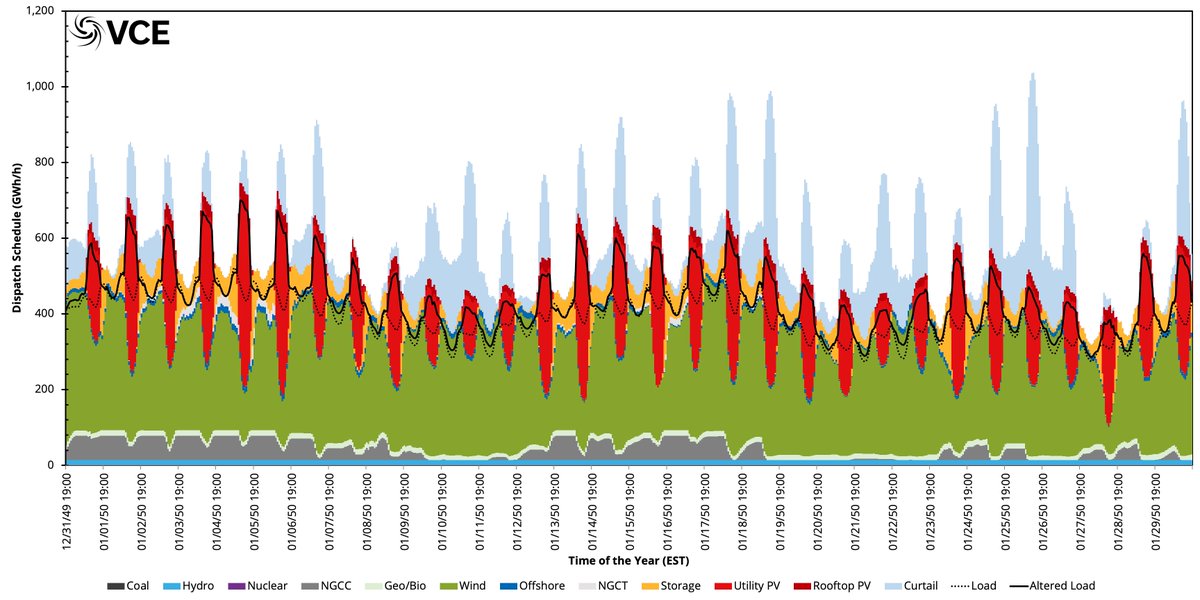
⚡️NEW STUDY RELEASE⚡️: Consumer, Employment, and Environmental Benefits of Electricity Transmission Expansion in the Eastern United States w/ @CleanEnergyGrid @gogginmichael @DrChrisClack. A short thread... 

High-level: If the Eastern US aims for 95% GHG reduction by 2050 (65% by 2035) it could have 6 million new jobs, $100 billion reduced costs, and over 80% generation from wind and solar. How? This is enabled by new high-voltage transmission connecting everything together 

Note that transmission and storage actually work together in a decarbonized grid because they provide complementary benefits. Storage provides temporal diversity and transmission provides geographic diversity. The sum of the two are greater than the parts. 

How much transmission are we talking? Well quite a bit, but the cost of that is small relative to the investments in wind, solar, storage and other generation. Less than 1/4 of 1¢ per kWh. 



The buildout and decarbonization comes with jobs, lots of jobs and they appear across rural parts of the Eastern US. So many jobs that it would triple the electric sector employment. 

The resource mix moves towards wind and solar primarily with some amount of natural gas for balancing. Note that in the deeper decarbonization natural gas is displaced by wind, solar, storage and transmission with minimal additional costs. 



The emission reductions were studied under a weak and strong decarbonization policy. The weak policy results in approximately 70% decarb. by 2050 and the deep results in 95% reduction. The difference cumulatively by 2050 is 7.6 Billion metric tons of GHGs reduced. 

As always, the WIS:dom®-P model must ensure reliable power is provided at all time intervals without fail taking into consideration the variable generation, power flow, losses, curtailment and commitment variables. This is ensured even with the high penetration of VREs. 



Please find the Report here: vibrantcleanenergy.com/wp-content/upl…
or here: cleanenergygrid.org/wp-content/upl…
or here: cleanenergygrid.org/wp-content/upl…
Our Press Release here: vibrantcleanenergy.com/wp-content/upl…
Output Model Data here: vibrantcleanenergy.com/wp-content/upl…
Output Model Data here: vibrantcleanenergy.com/wp-content/upl…
Please join the launch webinar this afternoon (3pm ET): zoom.us/webinar/regist… with an all-star line up.
• • •
Missing some Tweet in this thread? You can try to
force a refresh






